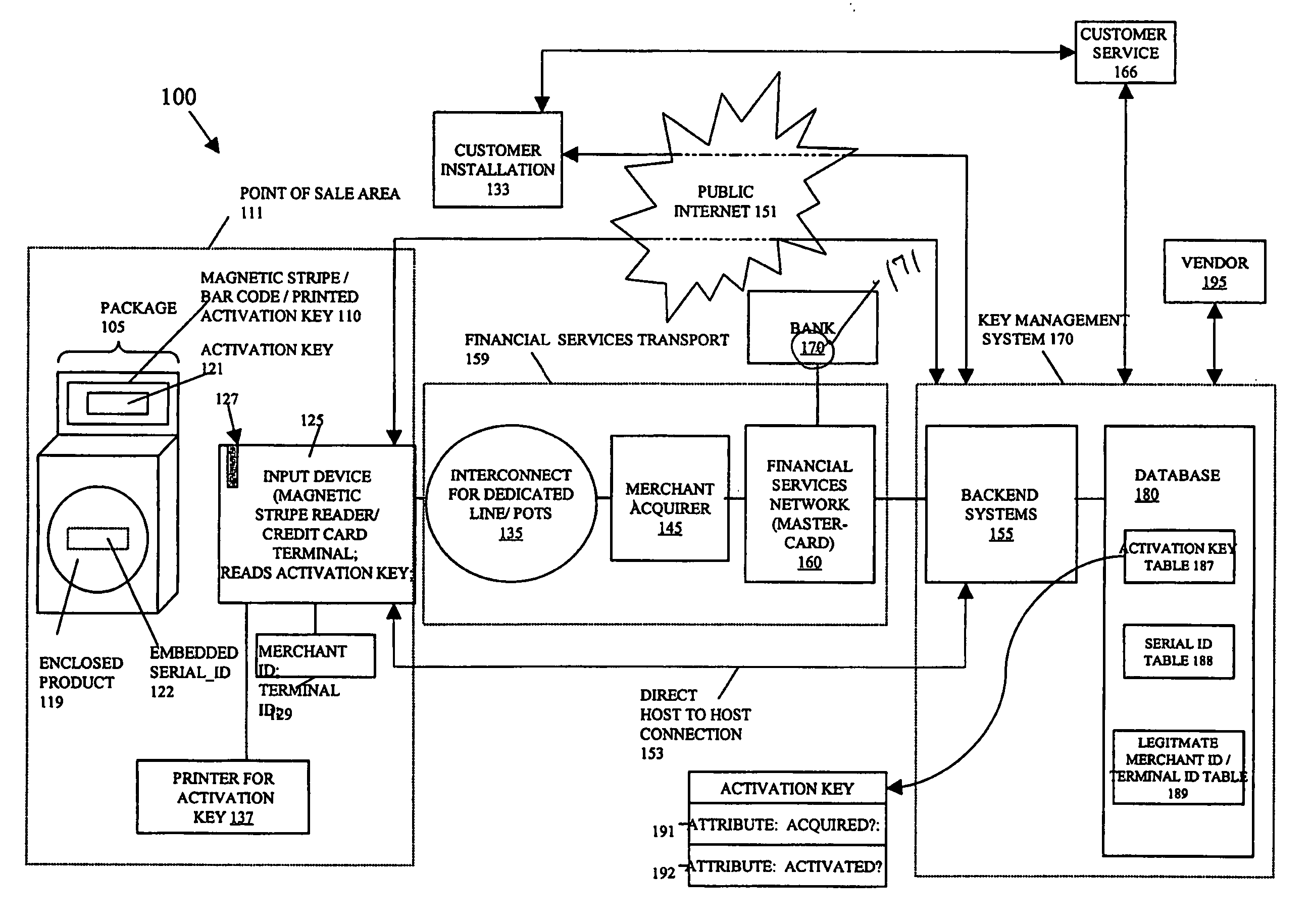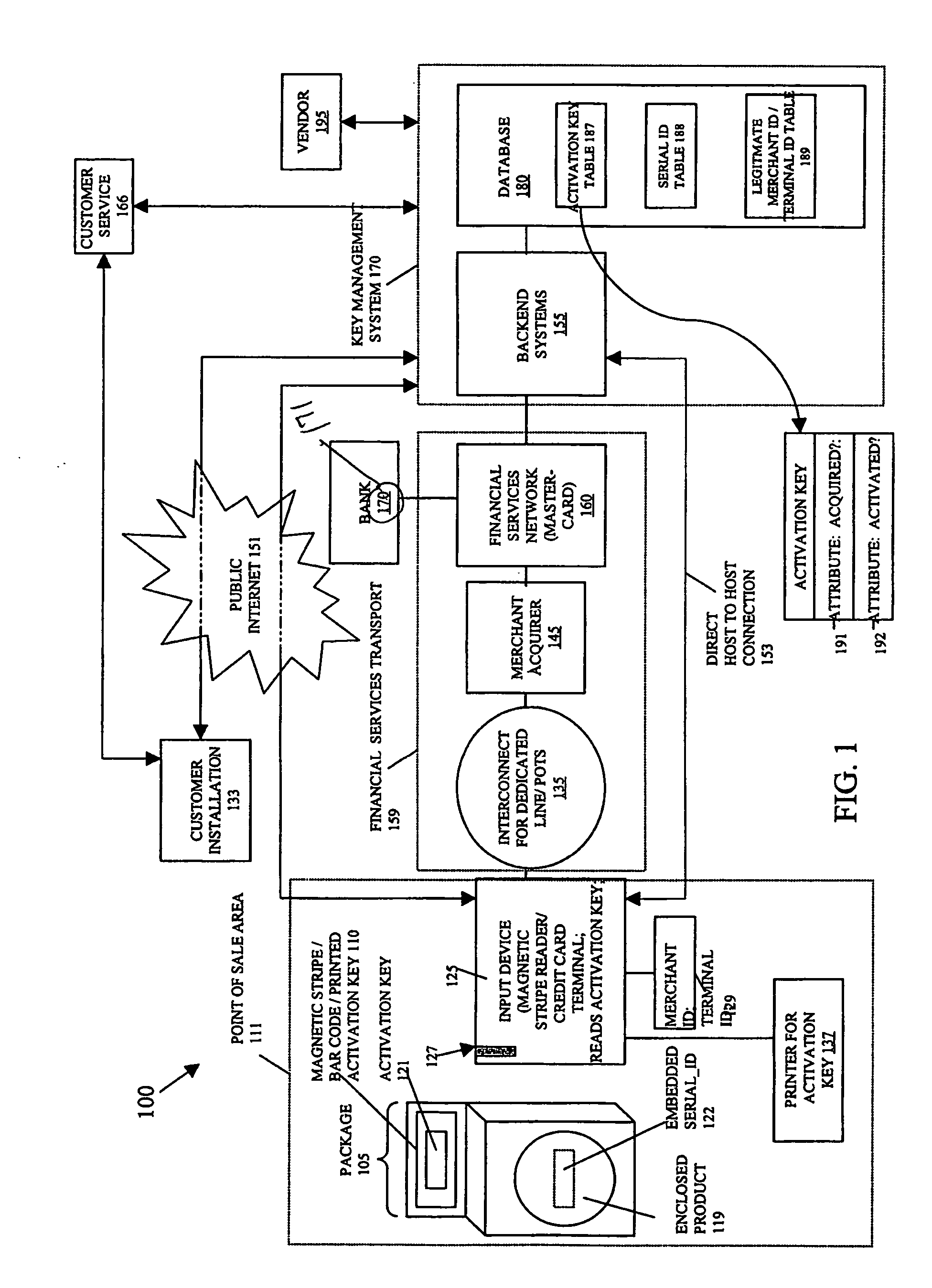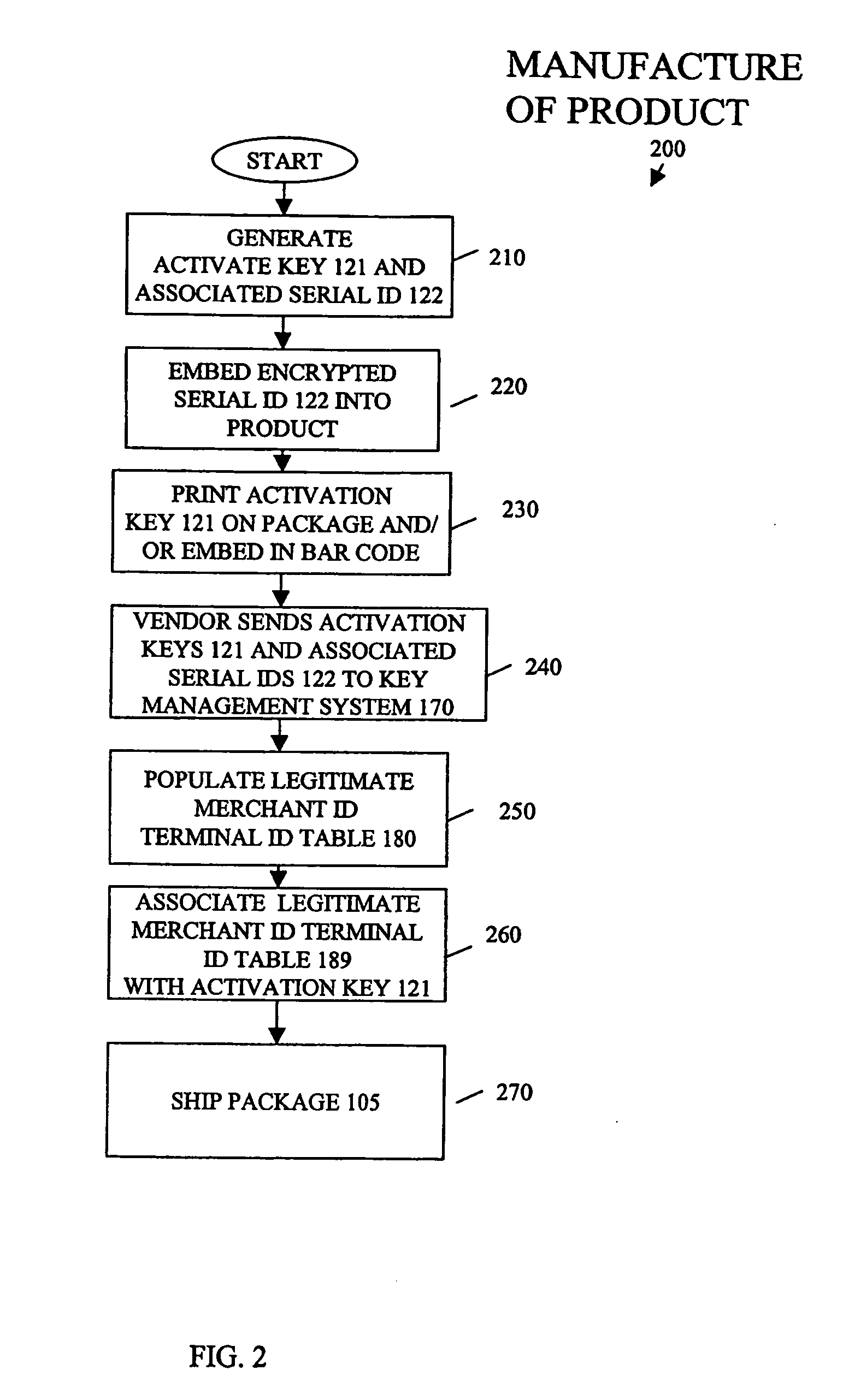Point of sale product authorization
a technology for a point of sale and a product, applied in the direction of instruments, buying/selling/lease transactions, data processing applications, etc., can solve the problems of reducing the amount of products a retailer can display at any one time, the actual inventory being smaller, and the shrinkage of retail inventory a significant part of the retailer's overhead costs
- Summary
- Abstract
- Description
- Claims
- Application Information
AI Technical Summary
Benefits of technology
Problems solved by technology
Method used
Image
Examples
first embodiment
[0062] In a first embodiment, a process of installation of product 119 occurs online using public Internet 151. A user of product 119 enters activation key 121 into product 119 at a time of installation, which sends it to KMS 170 to determine whether activation key 121 has already been activated by another user. If it is not in use, and activation key 121 is otherwise legitimately acquired, KMS 170 then checks a stored serial ID from a serial ID file 188 against embedded serial ID 122. If these values match, KMS 170 activates product 119. If these values do not match, KMS 170 does not activate product 119.
second embodiment
[0063] In a second embodiment, to activate product 119, the installation is desired to be performed offline. Therefore, the purchaser acquires via printer for activation key 137 a print-out of activation key 121 at time of sale in POS area 111. Then, when installing offline, the user contacts a customer service 166, which is coupled to KMS 170, and provides activation key 121, received from POS area 111. If activation key 121 passes the various tests associated with it (was it properly acquired, and so on, as will be detailed below), an offline code is conveyed to customer installation 133 by a customer service 166 to be used in the installation of product 119, correlating to a serial ID in serial ID file 188. This received offline code is compared by a serial ID comparator within product 119 to determine whether to install or not to install product 119.
[0064] Furthermore, although embedded serial ID 122 and offline code can be copies of one another, it is not necessary that they ar...
PUM
 Login to View More
Login to View More Abstract
Description
Claims
Application Information
 Login to View More
Login to View More - R&D
- Intellectual Property
- Life Sciences
- Materials
- Tech Scout
- Unparalleled Data Quality
- Higher Quality Content
- 60% Fewer Hallucinations
Browse by: Latest US Patents, China's latest patents, Technical Efficacy Thesaurus, Application Domain, Technology Topic, Popular Technical Reports.
© 2025 PatSnap. All rights reserved.Legal|Privacy policy|Modern Slavery Act Transparency Statement|Sitemap|About US| Contact US: help@patsnap.com



